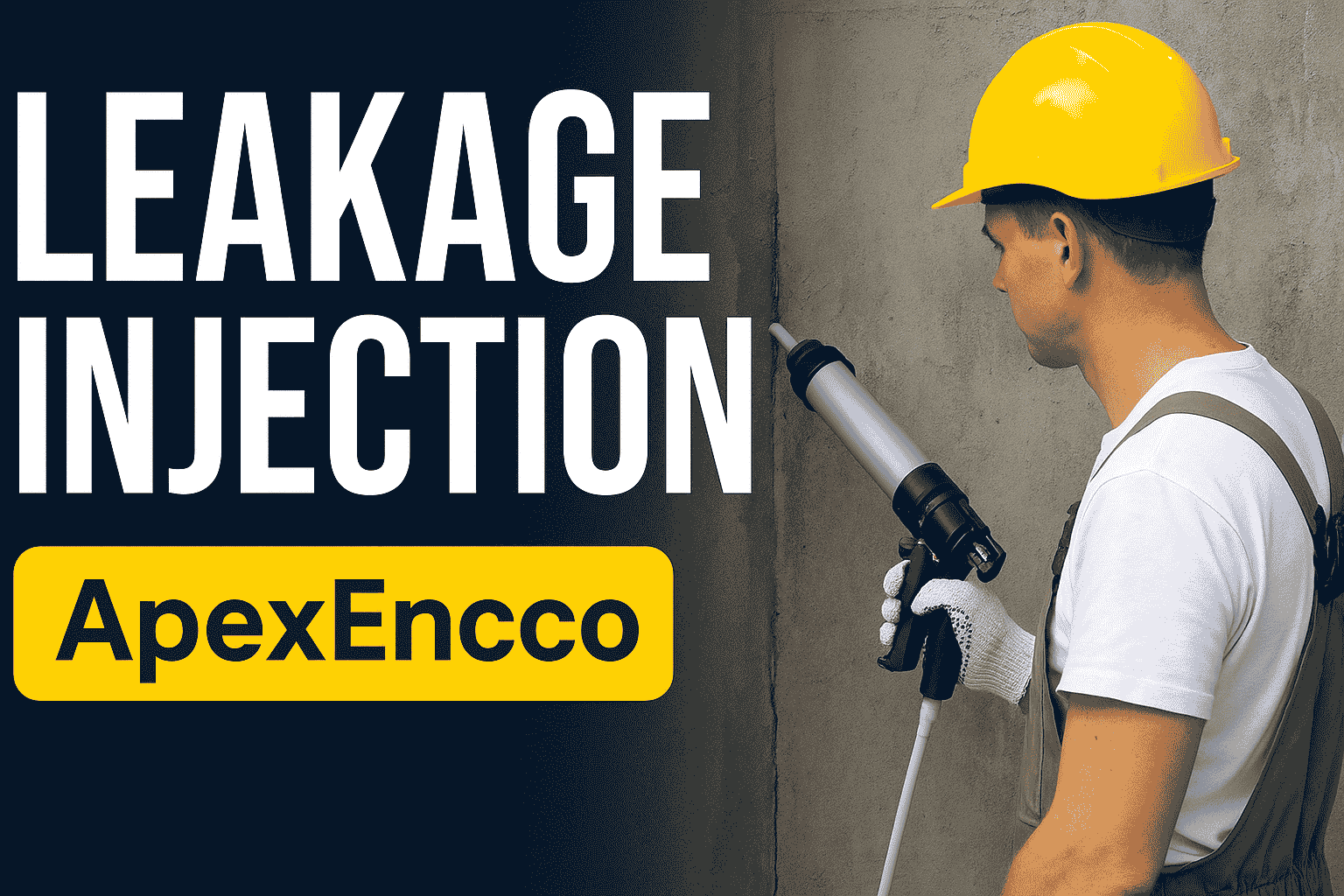Real Estate
From Novice to Pro: A Step-by-Step Guide to Real Estate Investing for Passive Income

Introduction to real estate investing
Real estate investing can be a great way to earn passive income. However, it’s important to do your research and understand the risks involved before getting started. This guide will give you an overview of real estate investing, including the different types of investments and strategies you can use to make money.
Why real estate investing for passive income?
There are a number of reasons to invest in real estate for passive income. For one, it can provide a steadier stream of income than other investments, such as stocks or bonds. Additionally, real estate has the potential to appreciate over time, providing you with even more income down the road.
Another benefit of real estate investing is that it can be relatively hands-off. Once you’ve purchased a property, you can hire a property management company to take care of the day-to-day tasks, leaving you free to enjoy your passive income.
Of course, there are risks associated with any investment, and real estate is no exception. However, if you do your homework and choose properties carefully, you can minimize those risks and maximize your chances for success.
So why invest in real estate for passive income? There are many compelling reasons to do so. With careful planning and execution, it can be a fantastic way to build long-term wealth.
The benefits of passive income
The benefits of passive income are many and varied, but they all come down to one thing: making money without actively working for it. That’s the beauty of passive income: it’s a way to make money while you sleep, or play, or work on something else entirely.
There are numerous ways to generate passive income, but most of them center around investing in assets that will generate income even when you’re not actively working. For example, you could invest in rental properties and receive rental income each month from tenants. Or, you could invest in a dividend-paying stock portfolio and earn dividends even when the stock market is down.
No matter how you generate passive income, the key is to put your money into something that will produce a steady stream of income without requiring much (or any) effort on your part. Once you have a solid passive income stream set up, you can then start working on other goals and objectives – like saving for retirement or buying a new home – knowing that your Passive Income will help fund those goals.
How to get started in real estate investing
There are a lot of things to consider when getting started in real estate investing. The most important thing is to do your research and understand the process. Once you have a firm understanding of how real estate investing works, you can begin to look for opportunities.
One of the best ways to get started is to find a mentor or join a group of like-minded individuals who can offer advice and support. There are also many online resources that can help you get started. The key is to take your time and make sure you are comfortable with the process before moving forward.
The different types of real estate investments
There are many different types of real estate investments, each with its own set of pros and cons. The most common types of real estate investments are single-family homes, multi-family homes, condominiums, and townhomes.
Single-family homes are the most popular type of real estate investment. They offer a high potential for appreciation and can be rented out to generate income. However, they also come with a higher level of risk and require more hands-on management than other types of real estate investments.
Multi-family homes, such as duplexes and apartment buildings, offer a higher potential return on investment than single-family homes. They can be more difficult to manage, however, and require a higher level of expertise.
Condominiums are another popular type of real estate investment. They offer many of the same benefits as single-family homes, but with the added benefit of being easier to manage. Condominiums can be more expensive to purchase than other types of real estate investments, however, and they may not appreciate in value as much as other types of properties.
Townhomes are similar to condominiums in terms of management and expense, but they tend to appreciate in value at a higher rate than condominiums. They are an excellent choice for investors who want to generate income from rental property without the hassle of managing multiple units.
How to choose the right property
Choosing the right property is one of the most important steps in real estate investing. The following are a few key considerations to keep in mind when choosing an investment property:
1. Location – The location of the property is one of the most important factors to consider. The property should be located in an area with strong economic fundamentals and future growth potential.
2. Type of Property – The type of property you choose will also have a big impact on your investment success. Single-family homes, for example, tend to be more stable investments than multifamily properties or commercial real estate.
3. Financing – Another important consideration is how you will finance the purchase of the property. You will need to obtain financing from a lender and should compare interest rates and terms before making a decision.
4. Rentability – When considering an investment property, it is important to think about its rentability potential. The property should be located in an area where there is high demand for rental units and it should be well-maintained so that it can attract quality tenants.
The importance of due diligence
When it comes to real estate investing, due diligence is of the utmost importance. This is true whether you’re a novice investor or a pro.
Due diligence is the process of investigating a property before making an offer to purchase. This investigation includes things like checking out the neighborhood, looking at comparable properties, and getting a home inspection.
Why is due diligence so important? Because it gives you an opportunity to find out if there are any potential problems with the property that could impact your ability to make money from it.
For example, if you’re looking at a fixer-upper, you’ll want to make sure that the repairs needed are not too extensive or expensive. If they are, you may want to pass on the property or negotiate for a lower price.
If you’re new to real estate investing, you may be tempted to skip the due diligence step in order to save time and money. But trust us, it’s worth doing your homework before buying any investment property.
How to find the best deals
If you’re new to real estate investing, finding the best deals can seem like a daunting task. But with a little research and legwork, you can find properties that offer great potential for passive income. Here are a few tips to get you started:
1. Look for motivated sellers. These are owners who are motivated to sell quickly, often due to financial hardship or other circumstances. They may be willing to accept a lower price in order to unload the property quickly.
2. Research market conditions. Knowing whether the market is hot or cold will help you gauge how much negotiating power you have. If it’s a buyer’s market, sellers may be more willing to negotiate on price.
3. Get pre-qualified for financing. This will show sellers that you’re serious about buying and give you more negotiating power when it comes to price and terms.
4. Hire a good real estate agent. A knowledgeable agent can help you find properties that fit your investment criteria and guide you through the negotiation process.
5. Be patient. It may take some time to find the right property, but patience pays off in the end when you find a great deal on a property that has huge potential for passive income.
How to finance your investment
When it comes to financing your investment, there are a few options available to you. You can either use your own money, take out a loan, or use a combination of both.
If you’re using your own money, you’ll need to have enough saved up to cover the entire cost of the investment. This includes the purchase price of the property, any necessary repairs or renovations, and closing costs.
If you’re taking out a loan, you’ll need to qualify for financing based on your creditworthiness and income. The interest rate and terms of the loan will vary depending on the lender, so it’s important to shop around for the best deal.
Using a combination of your own money and a loan is often the best option, as it allows you to keep more of your own money in reserve in case of unforeseen expenses. When using this method, be sure to get pre-approved for a loan so that you know how much you can borrow before making an offer on a property.
The Different Ways to Make Money in Real Estate
There are a few different ways that you can make money in real estate. The most common way is through rental income. This is when you purchase a property and then rent it out to tenants. The monthly rent payments then become your source of income.
Another way to make money in real estate is through flips. This is when you purchase a property, make some renovations, and then sell it for a higher price. This can be a great way to make some quick cash, but it does require more work than simply collecting rent each month.
Finally, you can also make money in real estate by becoming a real estate agent or broker. This involves helping people buy and sell properties. You can earn commission on each sale that you help facilitate. While this option does require some experience and knowledge of the real estate market, it can be a very lucrative career choice.
Conclusion
Real estate investing is a great way to grow your passive income and build wealth. Whether you are just starting out or have been in the game for decades, there are always things to learn and apply that can help you succeed as a real estate investor. The key is to start with small steps and work your way up as you become more familiar with the process. With patience, dedication, research and guidance from experienced professionals, you can make real estate investing one of the most profitable investments of all time.
Real Estate
Premium 2BHK Apartments in Gannavaram: Comfort and Convenience

Introduction
Gannavaram, located on the outskirts of Vijayawada in Andhra Pradesh, has rapidly emerged as one of the most promising real estate destinations in South India. With its strategic location, excellent connectivity, and growing infrastructure, Gannavaram has become a preferred residential choice for both homebuyers and investors. The demand for 2BHK apartments in Gannavaram is particularly high, driven by the area’s balanced mix of affordability, lifestyle amenities, and future growth potential.
The Rising Appeal of Gannavaram
Once known mainly for its airport and lush greenery, Gannavaram has transformed into a vibrant suburban hub with modern housing developments and thriving infrastructure. The locality’s proximity to Vijayawada International Airport makes it one of the most strategically located areas for professionals and frequent travelers. Additionally, its excellent connectivity via National Highway 16 (NH-16) and the upcoming Amaravati capital region projects have further enhanced its real estate appeal.
The government’s continuous focus on developing this region with better roads, flyovers, and urban facilities has encouraged many reputed builders to launch high-quality residential projects. As a result, 2BHK apartments in Gannavaram now offer urban comforts amidst a peaceful suburban setting.
Why Choose a 2BHK Apartment in Gannavaram?
A 2BHK apartment is one of the most sought-after configurations among middle-income families, working professionals, and investors. It offers the right balance between affordability, space, and functionality. Gannavaram provides multiple options in this category, catering to different budget ranges — from affordable housing to luxury apartments.
Here’s why buying a 2BHK apartment in Gannavaram makes perfect sense:
- Affordable Investment: Compared to Vijayawada’s city center, property prices in Gannavaram are still relatively lower, making it a great opportunity for first-time buyers or investors looking for long-term returns.
- Strategic Location: The area’s proximity to the airport, NH-16, and major educational and healthcare institutions enhances its livability quotient.
- Steady Appreciation: With rapid urbanization and infrastructural growth, property values in Gannavaram are steadily appreciating year after year.
- Peaceful Surroundings: Despite being well-connected, Gannavaram retains its greenery and calm environment, offering residents a serene lifestyle away from city chaos.
Modern Apartments with Contemporary Amenities

Image by: Yandex.com
The latest 2BHK apartments in Gannavaram are designed with a modern lifestyle in mind. Builders are focusing on open-plan layouts, efficient space utilization, and sustainable living practices. Apartments feature spacious living areas, large windows for cross-ventilation, and elegant interiors using premium-quality materials.
Most of these projects also come with a wide range of amenities that enhance daily living and promote community well-being. Some of the popular amenities include:
- Clubhouse and community hall for social gatherings and events
- Swimming pool and fitness center for an active lifestyle
- Children’s play area and landscaped gardens for family recreation
- Jogging track and yoga deck for health-conscious residents
- 24×7 security and CCTV surveillance ensuring complete safety
- Power backup and rainwater harvesting systems promoting convenience and sustainability
These thoughtfully planned residential complexes offer everything a modern family needs, making Gannavaram one of the most desirable places to live near Vijayawada.
Key Features of Premium 2BHK Apartments in Gannavaram
When looking for a premium 2BHK apartment, there are several factors that define the quality and value of the property. Here’s what you should expect from a well-designed and well-maintained 2BHK apartment in Gannavaram:
1. Modern Interiors and Spacious Layout
Premium 2BHK apartments are designed to offer maximum comfort and functionality. Expect modern interiors with spacious rooms, large windows that let in plenty of natural light, and a well-thought-out floor plan. The open-plan kitchen and living area create a sense of space, making the apartment feel larger than it is.
2. High-Quality Fixtures and Fittings
From the flooring to the kitchen counters, premium apartments use high-quality materials. Granite countertops, wooden floors, and premium tiling are common in these homes. The bathrooms are equipped with modern fixtures, ensuring that everything in your home looks stylish and functions flawlessly.
3. Advanced Security Features
Safety is a top priority when choosing a new home, and premium 2BHK apartments in Gannavaram come with advanced security systems. These may include 24/7 surveillance cameras, security guards, and gated entrances, providing you with peace of mind knowing that you and your family are safe.
4. Ample Parking Space
For those with a car, having dedicated parking is essential. Most premium 2BHK apartments offer ample parking space for residents, whether in an underground parking garage or open-air parking lot. This makes life more convenient for homeowners who own multiple vehicles.
5. Modern Amenities
To enhance the overall living experience, many 2BHK apartments in Gannavaram come equipped with modern amenities such as:
- Fitness centers
- Swimming pools
- Children’s play areas
- Clubhouses
- Party halls
These amenities provide opportunities for relaxation, fitness, and socialization, making your apartment complex feel like a community.
6. Energy-Efficient Designs
In an effort to promote sustainability, many premium 2BHK apartments in Gannavaram incorporate energy-efficient designs. This may include solar panels for electricity generation, LED lighting, and energy-efficient appliances. Such features not only help reduce your carbon footprint but also lower your utility bills in the long run.
Connectivity and Infrastructure
Gannavaram’s biggest strength lies in its excellent connectivity. The Vijayawada International Airport located here connects the region to major cities like Hyderabad, Chennai, and Bangalore. The Vijayawada-Gannavaram Road and NH-16 make commuting to nearby business hubs and educational institutions extremely convenient.
Public transport facilities are also well-developed, with regular bus and taxi services connecting Gannavaram to Vijayawada city. The proposed metro connectivity in the Amaravati-Vijayawada region is expected to further boost accessibility in the coming years.
Educational institutions such as SRM University, Amrita University, and VIT-AP are within easy reach, attracting students and professionals to settle in the area. Renowned hospitals and clinics ensure residents have access to quality healthcare services nearby. Additionally, shopping complexes, supermarkets, and entertainment zones are developing rapidly, offering a balanced urban lifestyle.
Investment Opportunities in Gannavaram
For investors, 2BHK apartments in Gannavaram represent a high-potential investment opportunity. The real estate market here is still in its growth phase, meaning there’s substantial room for appreciation in property values. With constant infrastructure expansion, the presence of major institutions, and the increasing demand for rental properties due to nearby industrial zones, investors can expect both capital growth and rental income.
The rental demand is also supported by the growing number of professionals working in and around the Vijayawada-Gannavaram belt. Investors purchasing 2BHK apartments can earn stable rental returns while also benefiting from long-term appreciation.
Lifestyle Benefits of Living in Gannavaram
Beyond its investment potential, Gannavaram offers a peaceful and fulfilling lifestyle. The area is surrounded by scenic beauty, open spaces, and clean air a refreshing change from congested city life. Despite its serene environment, residents enjoy quick access to all modern conveniences.
Moreover, Gannavaram’s community atmosphere, safety, and upcoming commercial developments make it an excellent place for families. The region’s strong infrastructure, educational facilities, and employment opportunities create a complete ecosystem for comfortable living.
The Future of Gannavaram Real Estate
As Vijayawada continues to expand and Amaravati’s development gains momentum, Gannavaram is expected to benefit significantly. The government’s focus on improving infrastructure, promoting industrial growth, and expanding transportation links positions the area for exponential growth. Developers are also introducing smart home technologies, eco-friendly designs, and sustainable practices, ensuring that residents enjoy future-ready homes.
With all these advancements, 2BHK apartments in Gannavaram are set to become even more valuable assets in the coming years. Whether you are looking for a permanent home or a profitable investment, this is the perfect time to explore available projects in the area.
Conclusion
In conclusion, 2BHK apartments in Gannavaram offer a rare combination of affordability, modern amenities, excellent connectivity, and promising investment returns. The locality’s peaceful environment, rapid infrastructure development, and proximity to key urban centers make it an ideal choice for homebuyers seeking a perfect balance between urban convenience and suburban calm.
With continuous growth in residential demand, strong infrastructure support, and a promising future ahead, Gannavaram stands out as one of the best emerging real estate destinations in Andhra Pradesh. Investing in a 2BHK apartment here means securing not just a home — but a lifestyle of comfort, value, and lasting satisfaction.
Business industrial
Leakage Injection The Permanent Solution for Water Leakage

Introduction
Water leakage is a common yet serious problem that affects buildings, foundations, and concrete structures. Over time, cracks develop due to pressure, temperature changes, or weak construction. These cracks allow water to seep in, causing corrosion, dampness, and structural damage. To overcome this problem, Leakage Injection has become one of the most trusted and long-lasting solutions in modern waterproofing technology.
At Apex Encco, we specialize in Leakage Injection services designed to seal cracks, stop seepage, and strengthen concrete structures. Our goal is to deliver durable, cost-effective, and eco-friendly waterproofing solutions that protect your property for years to come.
What is Leakage Injection?
Leakage Injection is a method used to repair and waterproof concrete structures that suffer from water leakage. The process involves injecting a special chemical—commonly polyurethane or epoxy resin—into the affected cracks or joints. Once the material is injected, it expands and reacts with water, forming a strong, watertight barrier.
This process not only seals the leakage but also strengthens the structural integrity of the surface. Leakage Injection is widely used in both residential and industrial applications such as:
- Basements and foundations
- Water tanks and reservoirs
- Swimming pools
- Retaining walls and tunnels
- Industrial floors and parking decks
Unlike traditional waterproofing that often requires removing tiles or concrete, Leakage Injection is a non-invasive and highly efficient technique.
How Does Leakage Injection Work?
At Apex Encco, the Leakage Injection process is carried out with precision and advanced equipment. The key steps include:
- Inspection: Our experts first inspect the damaged area to locate visible and hidden cracks.
- Drilling Injection Ports: Small holes are drilled along the cracks to provide access points for injection.
- Injection Process: Using professional-grade pumps, resin is injected under controlled pressure.
- Reaction and Sealing: The resin expands upon contact with moisture, sealing the cracks completely.
- Finishing: The surface is then cleaned, sealed, and finished for a neat and durable result.
This entire process is quick, cost-effective, and guarantees a long-lasting waterproofing solution.
Benefits of Leakage Injection
The reason Leakage Injection is so popular is because of its multiple advantages over conventional waterproofing methods:
- Permanent Sealing: The injected material bonds with concrete, forming a durable seal that lasts for decades.
- Non-Destructive Repair: No need to break walls or floors for repairs.
- Works on Active Leaks: Polyurethane resins can seal cracks even with running water.
- Quick and Cost-Effective: The process saves both time and money.
- Strengthens the Structure: Epoxy injection not only seals but also reinforces concrete.
- Eco-Friendly: The materials used are safe and non-toxic.
At Apex Encco, we ensure every Leakage Injection project delivers long-term results without disrupting your property or operations.
Applications of Leakage Injection
Leakage Injection can be applied in various situations, including:
- Basements: Stop groundwater seepage and prevent damp walls.
- Water Tanks: Seal cracks to prevent water loss and contamination.
- Swimming Pools: Repair leaks without removing tiles or draining water.
- Tunnels & Dams: Protect large infrastructure from water infiltration.
- Industrial Plants: Maintain structural stability in process areas and reservoirs.
Each application requires a customized approach, and Apex Encco tailors every project according to the client’s needs and site conditions.
Why Choose Apex Encco for Leakage Injection?
When it comes to Leakage Injection, expertise matters. ApexEncco is a trusted name in the waterproofing and construction industry because of our quality-driven approach. Here’s why we stand out:
- Skilled Professionals: Our technicians are trained in the latest injection and waterproofing technologies.
- High-Quality Materials: We use premium-grade polyurethane and epoxy resins for lasting results.
- Customized Solutions: Every project is different, and we provide solutions tailored to each client.
- Proven Experience: We’ve completed hundreds of successful Leakage Injection projects across India.
- Customer Satisfaction: Our focus is on delivering permanent results and peace of mind.
When you choose Apex Encco, you’re choosing quality, reliability, and long-term protection for your property.
Maintenance Tips After Leakage Injection
Even after a professional Leakage Injection, maintenance plays a key role in extending the life of the repair:
- Keep drainage systems clean and unclogged.
- Regularly inspect for new cracks or damp patches.
- Avoid drilling or heavy vibration near repaired areas.
- Use surface waterproof coatings for added protection.
Following these steps will help your Leakage Injection system last longer and perform better.
The Future of Leakage Injection Technology
Modern Leakage Injection systems are evolving with new materials and smarter techniques.
Polyurethane and epoxy formulations are becoming more flexible, stronger, and faster-curing. Automated pumps now control injection pressure more precisely, improving accuracy and effectiveness.
At Apex Encco, we stay updated with these technological advancements to offer our clients the best waterproofing solutions available in the market.
Conclusion
Water leakage can compromise the strength, safety, and appearance of any structure. Leakage Injection is a powerful, cost-effective, and long-lasting method to stop leaks and restore structural integrity.
With Apex Encco, you can trust that every Leakage Injection project is handled with care, expertise, and precision. From residential basements to large industrial tanks, we deliver results that protect your property for years.
If you’re facing any kind of water leakage, contact Apex Encco today — your reliable partner for professional Leakage Injection and waterproofing solutions.
Real Estate
Architectural Design Services in Lahore Your Guide to Smart

Introdcution
Building or renovating a home or office in Lahore is an exciting journey. But before construction begins, you need a smart, functional, and creative design. That’s where architectural design services in Lahore come in. These services turn your ideas into real plans, ensuring your building looks great, follows city rules, and fits your budget.
In this blog, we’ll explore what architectural design services include, why they’re important, and how to choose the right company for your project in Lahore.
What Are Architectural Design Services?
Architectural design services are all about planning how a building will look and function. A professional architect listens to your ideas, studies your needs, and creates a design that balances beauty and practicality.
These services include:
- Concept Design: Turning your thoughts into a visual idea or layout.
- Detailed Drawings: Creating accurate plans, elevations, and sections for construction.
- 3D Visualization: Helping you see what your project will look like before it’s built.
- Structural Coordination: Working with engineers to make sure the design is safe and strong.
- Interior and Exterior Planning: Designing both indoor and outdoor spaces to match your style.
- Supervision: Some firms also monitor construction to ensure the design is followed properly.
In short, architectural design services ensure your building is well-planned, functional, and aesthetically pleasing.
Why Are Architectural Services Important in Lahore?
Lahore is a fast-growing city with a rich history and modern ambitions. The city’s architecture reflects this mix of old and new. Using professional architectural services helps you:
- Use Space Wisely: Architects plan buildings that fit your land and needs perfectly.
- Save Money: Good design reduces waste and costly mistakes during construction.
- Follow Rules: Architects know the building laws in Lahore and help avoid legal issues.
- Increase Value: A well-designed building looks great and adds value to your property.
- Improve Comfort: Architects design for natural light, ventilation, and energy efficiency.
With Lahore’s changing climate and urban growth, smart architectural design is more important than ever.
Types of Architectural Design Services Available in Lahore
Depending on your project, you can find different types of architectural services in Lahore:
- Residential Design: If you want to build or renovate a home, residential architects create designs that fit your lifestyle. They focus on comfort, safety, and beauty.
- Commercial Design: For offices, shops, or restaurants, commercial architects design spaces that attract customers and support business needs.
- Landscape Architecture: Some firms also offer landscape design to make outdoor spaces green, welcoming, and functional.
- Interior Architecture: This service focuses on the design of indoor spaces, including furniture layout, lighting, and decoration.
Why Choose Professional Architectural Design Services in Lahore?
Lahore is a city rich in culture and modern development. From traditional homes to luxury villas and commercial buildings, good design makes all the difference.
Here’s why hiring a professional architect in Lahore is worth it:
- Smart Space Utilization: Architects know how to make the most of every inch. Whether your plot is small or large, they can design a layout that feels open and organized.
- Budget-Friendly Planning: Good design saves money in the long run. Architects prevent costly mistakes by planning materials, structure, and space usage carefully.
- Local Expertise: Lahore-based architects understand local building laws, weather conditions, and material availability, helping your project run smoothly.
- Creative Design Solutions: Professionals bring unique design ideas that balance traditional Lahore architecture with modern trends.
- Increased Property Value: A well-designed home or office isn’t just beautiful it’s a long-term investment that increases your property’s worth.
Latest Architectural Trends in Lahore
Modern Lahore architecture blends culture with innovation. If you’re planning a project, these design trends are shaping the city’s landscape:
- Minimalist Homes: Clean layouts, open spaces, and natural lighting.
- Eco-Friendly Designs: Use of energy-efficient materials, solar panels, and water-saving systems.
- Contemporary Facades: Stylish glass, steel, and textured finishes.
- Smart Homes: Integration of technology for lighting, temperature, and security control.
- Cultural Touches: Arches, courtyards, and carved wood designs inspired by Mughal architecture.
These trends show how architectural design services in Lahore are evolving with time while keeping the city’s cultural charm alive.
How to Choose the Right Architectural Design Firm in Lahore
Selecting the right firm can make or break your project. Here’s how to choose wisely:
- Check Their Experience: Review the firm’s portfolio. Experienced architects handle everything from small homes to large commercial projects.
- Read Client Reviews: Customer feedback reveals how professional, punctual, and reliable the firm is.
- Discuss Your Budget: A transparent company will explain all costs clearly before starting the work.
- Understand Their Process: Ask about design stages, approvals, and estimated timelines.
- Evaluate Communication: Choose a firm that listens to your ideas and provides regular updates.
If you want experts who combine creativity with reliability, explore Highland Constructions one of Lahore’s most trusted architectural service providers. They specialize in designing modern, practical, and elegant spaces that fit every lifestyle and budget.
Benefits of Hiring Professional Architects in Lahore
Working with professional architectural firms in Lahore brings many advantages:
- Personalized Designs: Tailored to your family’s lifestyle or business needs.
- Time-Saving: Experts handle approvals, drawings, and project coordination efficiently.
- Quality Assurance: Proper planning reduces construction errors and delays.
- Sustainability: Architects design with eco-friendly methods for better energy use.
- Long-Term Value: Professionally designed buildings age gracefully and hold their worth.
Why Lahore Is Perfect for Modern Architecture
Lahore is a city where old meets new Mughal heritage buildings stand beside modern skyscrapers. The city’s growing real estate market has encouraged architectural innovation.
Architectural firms in Lahore now use advanced software and 3D visualization to bring ideas to life. Whether you’re building a cozy home in DHA or a commercial plaza in Gulberg, you’ll find talented architects who understand how to balance creativity with practicality.
These professionals not only design beautiful spaces but also ensure they’re safe, comfortable, and built to last.
Conclusion
Your dream space starts with the right design. Professional architectural design services in Lahore turn your ideas into detailed, functional, and beautiful plans. From modern homes to commercial projects, architects make sure every detail is perfect.
If you want to work with a trusted team, visit Highland Constructions experts in modern architectural design, construction, and project management in Lahore. Their team combines creativity, innovation, and precision to build spaces that truly stand out.
Let your space tell your story beautifully, efficiently, and smartly designed.
FAQs
Q1. What do architectural design services include?
They cover concept design, detailed drawings, 3D visuals, interior and exterior planning, and supervision during construction.
Q2. How much do architectural design services cost in Lahore?
Costs vary based on project size and complexity. On average, it ranges from 3% to 7% of total construction costs.
Q3. Can architectural design firms in Lahore handle both design and construction?
Yes, many firms like Highland Constructions offer complete design-to-build services for hassle-free project management.
-
Business2 years ago
Cybersecurity Consulting Company SequelNet Provides Critical IT Support Services to Medical Billing Firm, Medical Optimum
-
Business2 years ago
Team Communication Software Transforms Operations at Finance Innovate
-
Business2 years ago
Project Management Tool Transforms Long Island Business
-
Business2 years ago
How Alleviate Poverty Utilized IPPBX’s All-in-One Solution to Transform Lives in New York City
-
health2 years ago
Breast Cancer: The Imperative Role of Mammograms in Screening and Early Detection
-
Sports2 years ago
Unstoppable Collaboration: D.C.’s Citi Open and Silicon Valley Classic Unite to Propel Women’s Tennis to New Heights
-
Art /Entertainment3 years ago
Embracing Renewal: Sizdabedar Celebrations Unite Iranians in New York’s Eisenhower Park
-
Finance3 years ago
The Benefits of Starting a Side Hustle for Financial Freedom































